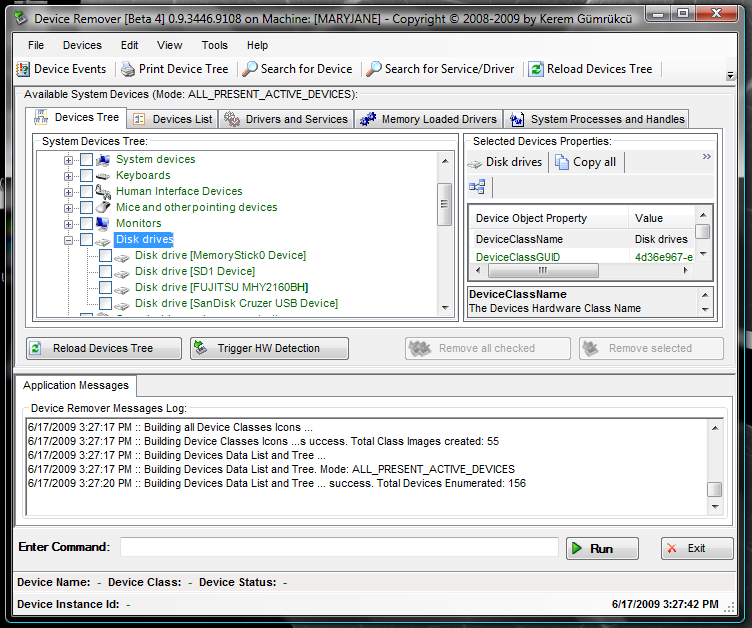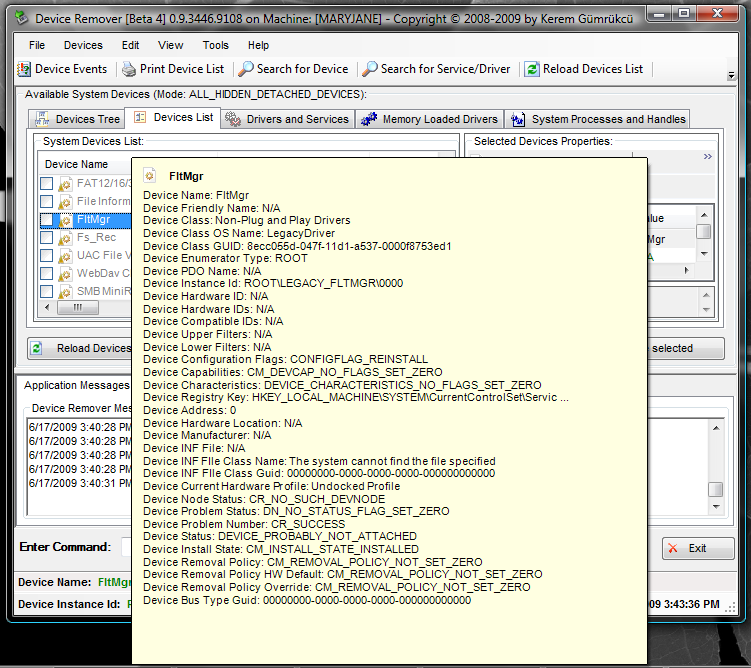How To Remove Devices From Starz
 I of the weakest aspects of the Windows operating system is the built-in device direction system. With the default tool, it can exist a real chore to go really detailed information nigh the hardware you have on your system. For example, if you plug in a USB flash drive, in that location's trivial insight you lot can gain almost it outside of basic information (type and name of drive likewise as contents of the drive). If you wind up having to troubleshoot that drive, you're going to need much more data.
I of the weakest aspects of the Windows operating system is the built-in device direction system. With the default tool, it can exist a real chore to go really detailed information nigh the hardware you have on your system. For example, if you plug in a USB flash drive, in that location's trivial insight you lot can gain almost it outside of basic information (type and name of drive likewise as contents of the drive). If you wind up having to troubleshoot that drive, you're going to need much more data.
There are a lot of alternative tools for every office of the Windows operating system, but one tool goes far and beyond the standard built-in application. Device Remover is a piece of freeware that replaces the built-in Device Manager tools establish in Windows. And Device Remover is uniform with every version of Microsoft Windows since Windows XP (including Windows 7).
(Editor'south notation: The programmer has confirmed that Device Remover is likewise uniform with Windows 2000.)
With Device Remover yous can:
- Easily remove devices on the fly
- View detailed data nigh devices
- Troubleshoot devices
- Mass edit multiple devices
- Manage on-the-fly drivers, registry entries, and file backup
- Find new hardware
At offset look, Device Remover tin can be intimidating. It'southward not really. Although you can run across more than data than you volition probably e'er need, y'all don't accept to bother with such low-level data to make Device Remover worth using.
This blog post is also bachelor in PDF format in a free TechRepublic download.
Let'southward take a await and see how Device Remover tin be installed and used.
Getting and installing
As with whatsoever Windows application, installing Device Remover is elementary. Download Device Remover either the .exe or the .aught file from the download section. Annotation: Due to bandwidth limits the developer asks that you download the .zilch version.
(Editor'southward note: The developer has recently added several more download mirrors: Standalone Master File, Full Installer, Zipped Full Installer.)
In one case you have the file on your drive, unzip information technology with your favorite decompression packet (mine is 7zip) and double-click on the resulting .exe file. The installation is simple and volition stop with a new submenu in your Offset menu called Device Remover.
In that submenu you will find:
- Device Remover: The executable for the application
- Device Remover Cleanup: This tool is used to clean upward whatever mess left behind in case Device Remover is accidentally airtight.
- Device Remover Startup Helper: This is how you lot configure Device Remover Startup options
- Uninstall: Remove Device Remover
- View log files recorded from within a viewer
You lot are now fix to run Device Remover.
Basic usage
Past default, when y'all showtime Device Remover the Debug Panel volition open. When the Debug Console is open and displayed on your desktop it will remain on top of all windows (Figure A).
Effigy A
You will see more data than yous will always need nigh a device from this window.
If you don't need the debugging console, yous can get rid of it from the options window (more than on that later).
In one case you become across the Debugging Console, you lot volition see the primary window for Device Remover (Figure B).
Figure B
This is the master user interface for Device Remover.
At first glance y'all might think Device Remover is a rather complex tool:
- Device Tree
- Selected Device Properties
- Application Messages
- Command line
- Devices List
- Drivers and Services
- Memory Loaded Drivers
- System Processes and Handles
- Device Events
- Print Device Tree
- Search for Device
- Search for Service/Driver
- Reload Devices Tree
Every bit the proper noun implies, the principal reason you would want to use Device Remover is for calculation and removing devices from your Windows machine. Let's see exactly how that works.
Calculation removing USB flash drive
In Figure C you can encounter that the listing of drives does non include the Sandisk Cruzer that I am near to insert.
Figure C
If you lot look at the log you can see that I recently removed the Cruzer drive.
Now I will insert the bulldoze and click the Reload Devices Tree, and the Cruzer will be listed in the Disk Bulldoze Tree, as shown in Effigy D.
Figure D
The tree list doesn't automatically refresh past default.
In order to run across the Devices Tree listing auto update upon removal or improver of a Device, click on the View menu and check Update Devices List on Device Change. To remove this same device, select the device and click Remove Selected.
Viewing subconscious or nonpresent devices
There are times that you want to see hidden devices or devices that are not currently nowadays on your organization. Device Remover allows for this beliefs. The choice to evidence hidden or detached devices is found in the Device Remover Display Fashion submenu of the View menu in the Device Remover Tool bar. To see subconscious devices, click on the Device Remover Brandish Mode submenu and bank check Prove Only Subconscious/Discrete Devices. When you check this, the Devices Listing tree will modify, as shown in Figure E.
Figure E
In this view you tin see how much information a mouse-over gives you lot on a particular device.
Obviously these are non devices you lot are going to want to remove. This feature is best used for gaining data most a device on your car. In Figure D you are seeing data nigh the Filter Manager. You tin can find information at that place or you can cheque out the Selected Device Backdrop Window.
Creating services and drivers
An interesting characteristic with Device Remover is the ability to create a service or driver. To do this, click on the Drivers and Services tab and then click the Create Services button that will appear in this tab. When you click this button, a new window will appear (Figure F). Make sure you know exactly what you are doing when creating a service. This feature is non for the faint of eye as it can create instability and decrease functioning and organisation security.
Effigy F
This is a feature that must be used with caution as information technology can effect stability, performance, and security of your organization should a device or driver be created improperly.
With the service cosmos you can actually create kernel-level services and drivers. Again I will warn: Utilize WITH CAUTION.
Searching
One of the features I use the nearly with this tool is the search feature. When trying to browse through the enormous amount of drivers and commuter files on a Window machine, information technology helps to be able to search. With Device Remover yous can really search for a device or a driver. Say you need to get information about the USBSTOR driver. Click on the Search for Service/Commuter push, enter "USB" (no quotes) in the text field, and hit the Find button. The results (shown in Figure One thousand) volition requite you plenty of information about this driver/service.
Figure G
You tin can become even more data past hovering your mouse over the entry in the listing window.
Terminal thoughts
Nosotros have only scratched the surface of what this tool can practise. Once yous kickoff using Device Remover you will observe more and more uses and more and more than reasons for information technology to become your default device manager.
Stay on top of the latest XP tips and tricks with TechRepublic'due south Windows XP newsletter, delivered every Th. Automatically sign upwardly today!
Source: https://www.techrepublic.com/blog/windows-and-office/how-do-i-manage-windows-devices-with-device-remover/








0 Response to "How To Remove Devices From Starz"
Post a Comment